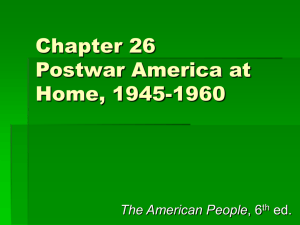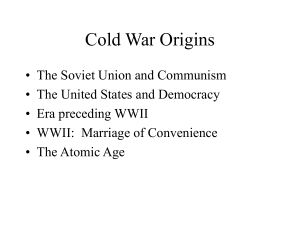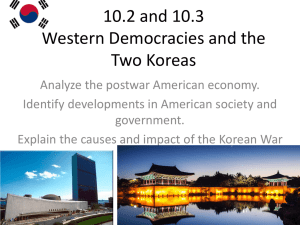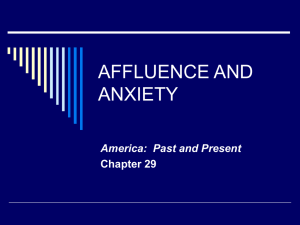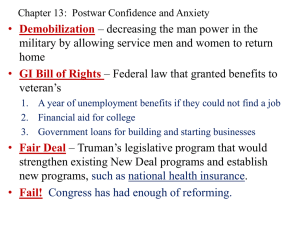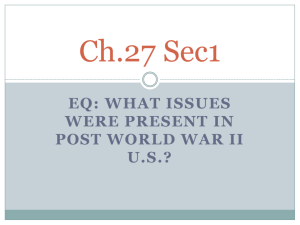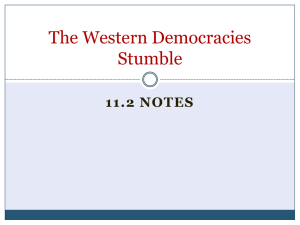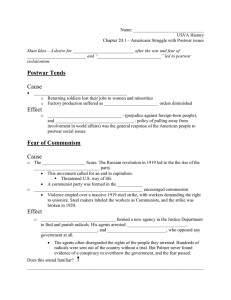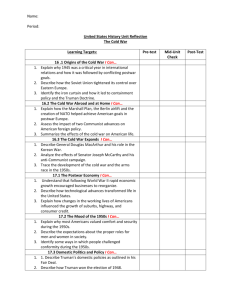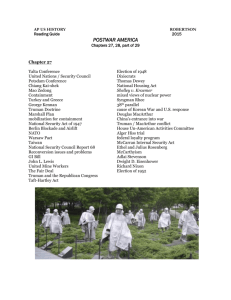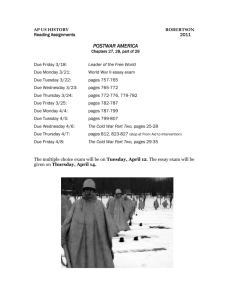Postwar America: The Affluent Society
advertisement
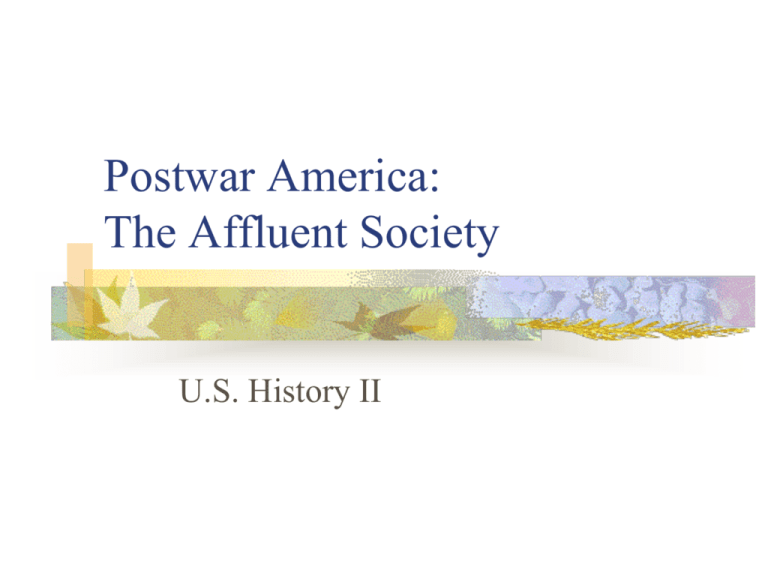
Postwar America: The Affluent Society U.S. History II The Fair Deal Truman asked Congress for: national health insurance increased minimum wage full employment guarantee civil rights for African Americans Republican-controlled Congress blocked his programs, but Truman vetoed their tax cut Desegregated armed forces by executive order in 1948 The Election of 1948 Population Growth and Shifts 20 million move from rural to urban areas By 1970, 76 million in suburbs, 64 million in cities Gov’t subsidized: FHA insured builders’ loans & buyers’ mortgages Veterans got additional benefits Expressways built Levittown Levitt Home Styles Levittowns Building the New York Thruway Postwar Economic Boom White-collar workers outnumber blue-collar workers for first time Rosie the Riveter went back to being Rosie the Secretary Television & the Consumer Economy Postwar marketing used powerful new medium of TV Business model based on radio Nationwide networks Advertisers sponsors shows to reach demographic groups Advertisers increasingly targeted teenagers Increasing disposable income Highly susceptible to emotional manipulation Other Postwar Trends Christian revival, but mainline Protestant churches focus more on soothing middleclass anxieties than preaching the gospel Consensus & conformity characterize the national mood, but not a return to traditional values Rev. Norman Vincent Peale Eisenhower’s Dynamic Conservatism U.S. & Canada agree to jointly develop St. Lawrence Seaway (1954) 1954 Housing Act supposed to build lowincome housing for those displaced by urban renewal Atomic Energy Act (1954) allowed private companies to build nuclear power plants 1956 Highway Act spent $31 billion to create 41,000-mile interstate highway system Automobile America
